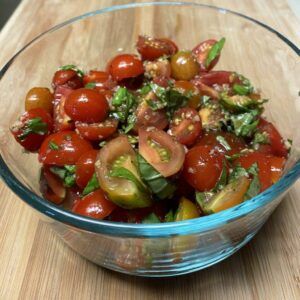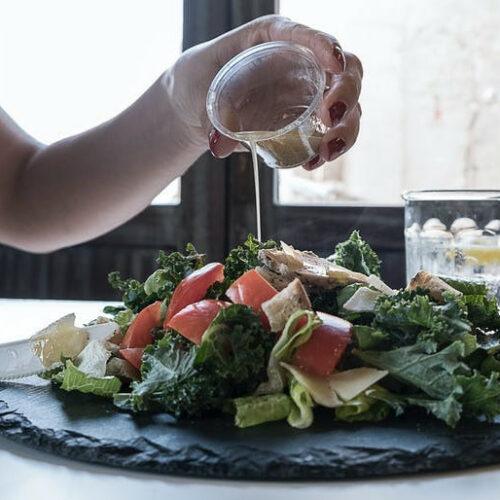Remember when nuts were unhealthy? Or when cranberries caused cancer? Here’s my take on 6 Foods That Were The Spawn Of Satan…Until They Weren’t

Remember when nuts were unhealthy? Or when cranberries caused cancer? Here’s my take on 6 Foods That Were The Spawn Of Satan…Until They Weren’t
When was the last time you heard that a particular food was bad for you? Maybe it was today. Maybe it was yesterday. Maybe you can’t open your computer or turn on your TV without hearing about the latest culinary evil that’s out to ruin your health.
Now ask yourself when was the last time you were told that a favorite nosh was certain death only to find out they were wrong? How many times can you remember that happening?
For your entertainment, I’d like to share with you a few foods that were considered the spawn of satan…until they weren’t…
The Skinny On Fats

It seems that nothing has gotten a worse rap than fat and cholesterol. Way back in the 1970s, the consensus began to take hold that eating fat caused fat to build up in the body and eating foods with cholesterol caused cholesterol to build up in the arteries. This was followed by a push to eat more sugar as a way to promote weight loss and energy.
This theory was eventually (and thankfully) disproved before the following 3 foods were forced to take a permanent dirt nap.
Eggs: Canadian researchers did a study of 1,231 patients to measure the linear increase in arterial plaque for people over 40. The study focused on which was worse: smoking (measured in pack-years) or consuming egg yolk (measured in yolk years). It was concluded that eating one egg yolk per day was as risky as smoking 5 cigarettes
ll turns out that it’s saturated fat that’s often consumed in the whole breakfast, not the cholesterol in eggs, that raises “bad” cholesterol (I’m looking at you, breakfast sausage). Eggs are a healthy source of high-quality protein, healthy fats as well as necessary vitamins and minerals.
Butter: The popularity of butter took a plummet back in the 1980s due to claims that cholesterol and saturated fat lead to coronary heart disease. Turns out the manmade trans fats found in margarine were worse.
While manufacturers have moved away from using trans fats in margarine, butter has come surging back as the underdog of the dinner table. The argument now rages as to whether we should be using synthetically produced margarine or butter, a natural food that (unquestionably) tastes better. The scientific community now agrees that both can be part of a healthy diet if used sparingly.
Welcome home, butter. I’ve missed you.
Nuts were once considered to be unhealthy due to their high-fat content. It’s now accepted that nuts are a nutrient-dense food that lowers the risk of disease by decreasing cholesterol, insulin resistance and blood vessel dysfunction.
Stop The Ride, I Want To Get Off

They were good…they were bad…they were good again…occasionally all at the same time!
Cranberries were first cultivated for commercial sale in 1816 in New England. Because of their growing season, which extends into November, these tart little berries became a favored Thanksgiving treat and enjoyed brisk sales until November 1959 when it was discovered that some cranberry samples tested positive for an herbicide that was thought to cause cancer.
Although cranberries were quickly cleared of any health hazards, sales struggled for the next several years. This was devastating for an industry that made the vast bulk of its profit over the winter holiday season. The answer to their prayers came in the early 1960s when Ocean Spray’s new CEO came up with a plan: Mix cranberry juice with sugar water and sell it year-round as a “Cranberry Juice Cocktail”. It was an instant hit and now both the juice and the cranberry itself are back in the good graces of John Q. Public. And, while we’re on the subject, check out my recipe for Fresh Whole Cranberry Sauce!
Bananas have a rollercoaster history worthy of a soap opera. They may have been cultivated as early as 1000 B.C. and became a popular treat shipped to different parts of the world beginning in the 7th century. By the 1700s, boats were reluctant to ship bananas due to superstitions that they caused the boats to sink and jinxed fish hauls.
Somewhere towards the end of World War One, United Fruit (who imported bananas) began to tote the delightful yellow fruit as a cure for childhood celiac disease while, at virtually the same time, others referred to them as “a cause of indigestion and a treacherous dietary component”. Researchers immediately came to the banana’s defense, calling them “a wholesome, palatable and nutritious article of food”.
This debate continues today with claims that bananas rot your teeth, lower your blood pressure and cause migraines. They aggravate constipation…unless they don’t. And don’t even get me started on how the fiber in them helps you lose weight unless the sugar makes you gain.
Is your head spinning yet?
Remember That One Time You Had To Give Up Coffee?

For years, doctors warned that drinking coffee led to a plethora of health risks: It could increase the risk of heart disease, stunt growth, cause stomach ulcers and heartburn, among other things. The problem? They didn’t factor in other risks like smoking, alcohol consumption, height, weight, diet, gender, ethnicity and blood pressure. A new study, done in 2019, did not endorse drinking coffee but it did debunk the previous studies.
Other recent studies show that coffee lowers the risk of developing diabetes and liver damage while boosting our concentration and memory. It may even ward off the mental decline caused by dementia.
The bad news? Caffeine is still addictive and withdrawal symptoms may cause headaches. It can interrupt sleep patterns and momentarily raise blood pressure. Considering my two-cups-a-day habit, I say it’s worth the trade-off!
Maybe The Problem With Food Is Food Itself

Nutraceuticals and fortified foods walk a thin line between food and medicine. Ever since we got it into our heads that certain foods are “good” for us, society has been on a mission to consume more of these foods, whether it be by eating copious amounts of a single food or taking it in pill form.
This article from 1896 gleefully predicts a future where it’s not necessary to eat food at all, instead a person would simply take a pill to fulfill their daily nutritional needs.
The author admits these pills won’t taste as good as real food but seems excited at the prospect of being able to give up dinner parties and the accompanying “symposia” that go with it. No, you’re right…conversation is overrated. And let’s not forget that “the pleasures of the table have ages on end been absorbing too much of the time and inclination of man and woman.”
Thankfully, this dire prediction hasn’t come to pass yet…and let’s hope it never does! For more of my thoughts on nutraceuticals, check out this article.
Just One Word: Ugh

What are we supposed to eat now? Who are we supposed to believe? What’s the deal?!?
How about this word: Context.
Many studies are undertaken to prove or disprove a particular theory and are often laser-focused to the point of silliness. At least one of those coffee studies includes people who drink up to 25 cups of coffee daily. And one discussion of how bananas rot our teeth included a baby whose parents allowed him to suck on bananas in place of a pacifier. Most of us don’t do either of those things so, really, do those studies even apply to us?
Here’s another word: Variety.
The most reasonable and healthy thing to do is to eat a variety of different foods. How many cranberries do you really need? And eating an entire jar of almonds will only ensure you don’t have any room to consume the other nutrients that are necessary for our bodies to function. While healthy, one cannot live on almonds alone.
Here’s my idea: Look at all those studies with a critical eye and decide if they really apply to you. Then go ahead and eat a variety of healthy foods to ensure that you have the right fuel mix to keep your engine running.
What’s your take on the subject? Let me know in the comments below!
All my best,
Cynthia
cynthia@cynthiaeats.com














